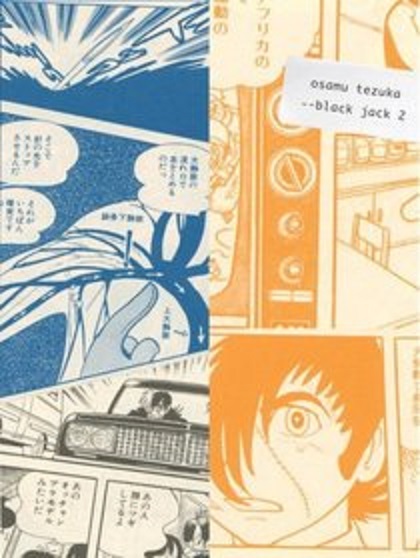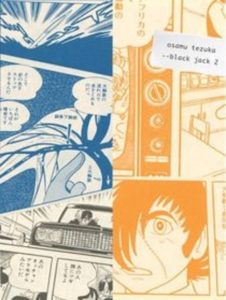Manga Review: Black Jack 2 by Osamu Tezuka
Before Osamu Tezuka became a full-time manga creator, he was a medical doctor. He drew upon this training and experiences with Japan’s medical establishment for his work on Black Jack starting in the 1970s.
Black Jack (birth name Kuro’o Hazama) is a brilliant physician and surgeon who is unlicensed (reasons differing between continuities) and therefore operates outside the law and the established medical system. For reasons that are not revealed until late in the manga, Black Jack requires large sums of money and will often charge outrageous fees. On the other hand, he will also often treat a patient for free or a nominal payment if the whim strikes him.
The stories are mostly episodic, and the order of presentation is not necessarily the order they occur. Most of them features valuable lessons about life, usually for the patient or another civilian, but sometimes for doctors or Black Jack himself.
In most of the stories, Black Jack is accompanied by Pinoko, a cyborg he created from a parasitic twin that had never fully developed. Her artificial body makes her look like a small child, and she usually acts like one, but Pinoko considers herself a grown woman and Black Jack’s wife. This can get pretty disturbing, but Tezuka never takes it in a sexual direction.
The first story in this volume is “Needle”, a thriller which begins with Black Jack successfully completing a tough operation. But an earthquake causes the tip of an IV needle to break off and travel down the blood vessel. Now Black Jack and his surgical team must try to locate the foreign object and remove it, before the heart is reached. Truly, the human body should not be underestimated!
“Where Art Thou, Friend?” is a flashback story that explains Black Jack’s mismatched skin tone. As a child, Kuro’o was in a horrific accident, and needed a large skin graft immediately. The only donor available (because the other classmates either chickened out or were forbidden by their parents) was a mixed-race child named Takashi.
Decades later, medical techniques have advanced, and Black Jack could get matching skin and have his facial scars ameliorated, but feels he would be dishonoring his friend by rejecting the lifesaving gift. This becomes his permanent attitude when Black Jack learns that Takashi died fighting for the environment in Algiers.
“Assembly Line Care” and “The Blind Acupuncturist” both have Black Jack clash with other doctors. In the first, a hospital director is keeping costs low by running operations like an assembly line, which is efficient, but gives an impression of impersonality. In the second, the title alternative practitioner donates his services freely, and dislikes Black Jack’s onerous fee structure. But he’s a little too hasty to volunteer, and makes a needle-phobic patient’s condition worse.
This volume also contains a “sealed chapter” (one that was excluded from the standard collections), “The One That Remains.” Sextuplets are born in Germany, one hideously deformed. The doctor in charge calls in Dr. Kiriko, a specialist in painless euthanasia. On the plane, Kiriko encounters Black Jack who violently objects to allowing patients to die.
Black Jack gets Dr. Kiriko detained by the police, and shows up in his place. While the sixth infant is deformed to the point of never being able to have a normal life, it’s also the most likely to survive, as the other five sextuplets are sickly. Indeed, one has just died! Black Jack suggests an audacious plan. He’ll use the organs of the dead sibling to fix some of the mutant’s deformities.
In the end, all the normal-looking babies die, but the sixth sibling is now no longer deformed and will survive. The public (who had not been told about the deformity thing) cheers, and Dr. Kiriko (finally released from custody) no longer has a patient.
The disturbing images and morbid subject matter caused the story to be pulled from compilations aimed at the original audience of young boys.
Although Tezuka felt no compunctions about just making up diseases for a good story, his anatomy is excellent and the operation scenes look realistic. This may be difficult for more sensitive readers.
Some physical depictions of other races are done in the then considered okay in Japan burlesque style that is now seen as highly racist. This translation has left this in place rather than have them redrawn.
Recommended for fans of medical drama.
Here’s the opening for one of several animated adaptations: https://www.youtube.com/watch?v=UQUEZ4kGwMU



1 comment
Comments are closed.